This article is more than 1 year old
Augmented reality: Who needs immersive worlds when you've got it all?
Google Glass? We've moved on, mate...
Wearable Tech Show 2015 While Google Glass and the odd knock-offs on the Oculus Rift VR concept was being mused upon at the Wearable Tech Show in 2014, at this year’s event in London this week, the headgear had a lot more to offer. Although the only mention of Google Glass you’d hear was its absence and its impact on the public’s sensitivity to privacy, rather than its loss as a potentially useful example of wearable technology.
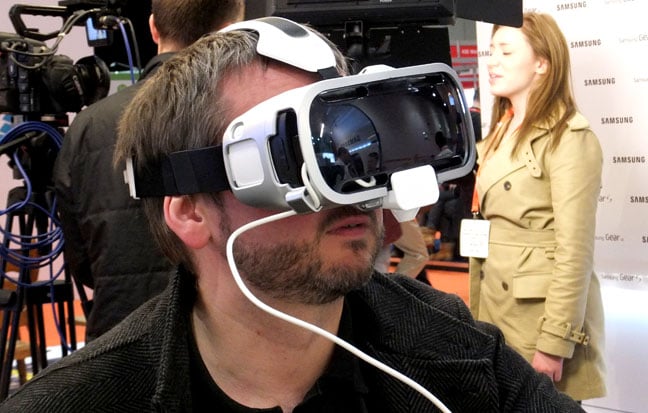
Samsung Gear VR headset needs a Samsung phone to do anything useful
Making wearables useful is still an ongoing process. While nobody has devised the killer app yet, the signs are that we’re going to see plenty of possibilities in the future.
Alongside its Galaxy Gear and Fit smartwatches, Samsung’s Gear VR goggles have the potential to deliver immersive entertainment but you will need to invest in a Samsung Galaxy smartphone first, as this is mounted inside the headset to provide the screen and to use the phone functions to relay vector information corresponding to your head movements. If you don’t move too rapidly, it works well enough: however, you are totally blind to the outside world.
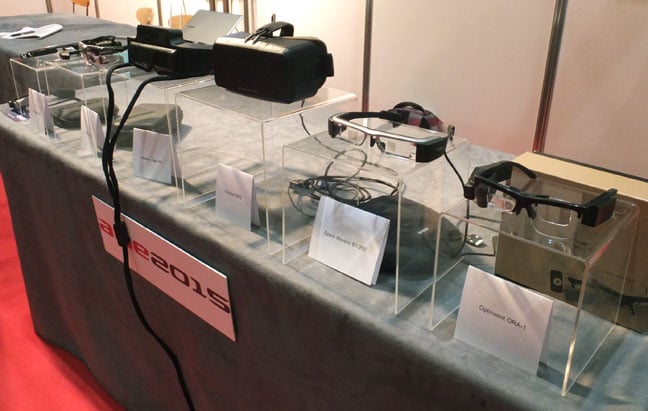
Headsets aplenty at the AugmentedReality.org stand. It was touting its report on the Smart Glasses Market 2015
Click for a larger image
A section devoted to Augmented Reality showcased some of the more interactive options which don’t keep you in the dark. To make this point, Infinity Augmented Reality Inc, is developing an augmented reality engine that enables a 3D interactive scene to be viewed over the existing environment with movement tracking et al.
To demonstrate this technology Motti Kushnir, the firm's CEO, had two off-the-shelf AR headsets on the stand. With the first model – a modified Zeis Cinemizer – you could see the world around you from the eyepiece video display in the headset and 3D objects appeared that could be examined more closely, by moving in towards them as your movements are tracked.
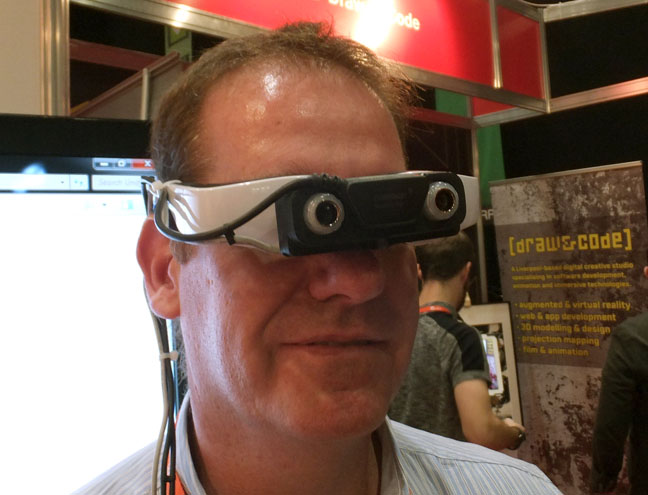
InfinityAR CEO Motti Kushnir dons the modified Zeis Cinemizer headset
All well and good but this sort of arrangement is likely to kill your battery life within 15 minutes as, apart from all the other functions, you’re also using infrared for tracking the real environment. This in turn means that the headsets don’t work face-to-face as you blind each other with the projected infra-red light.
InfinityAR’s second headset, an adapted Lumus DK-32 model, had a couple of ordinary cameras mounted on top that Kushnir remarked were “bought from Alibaba for a couple of dollars”.
The cleverness that Infinity AR brings is that the images from the two cameras are used to analyse the 3D environment so the wearer can interact with it and the objects are placed appropriately. Images are also projected on to the lenses, Google Glass style, so you can always see when wearing the headset regardless of whether there’s any image projection going on.
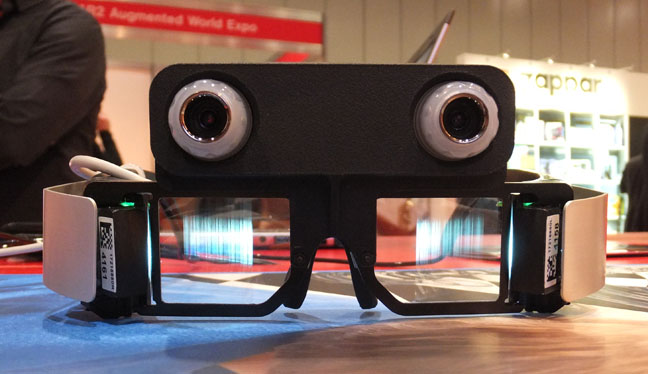
Low cost cameras help bring a 3D environment into the real world on a modified Lumus DK-32 headset
Viewing the demo through both types of glasses, the 3D objects would project their own shadows onto the real table where they’d spring up from. Likewise, shadows hit the table from a spacecraft gliding across the screen. More interesting still was that when you put your hand into the field of vision it is tracked, so the kit crops the mask's virtual images in realtime. The masking looked a bit "1970s pop video", but it’s a work in progress.
Wearing the new design headset, the objects appeared more translucent, but still perfectly visible. You could turn away from the scene to talk to someone and then turn back and it’s still there waiting for you. The tracking was a bit rough round the edges in places but it was a satisfying demo nonetheless.
InfinityAR reckons it could be used for training of maintenance engineers working on aircraft and could even help surgeons with 3D projections of bone scans that can be glanced up at.
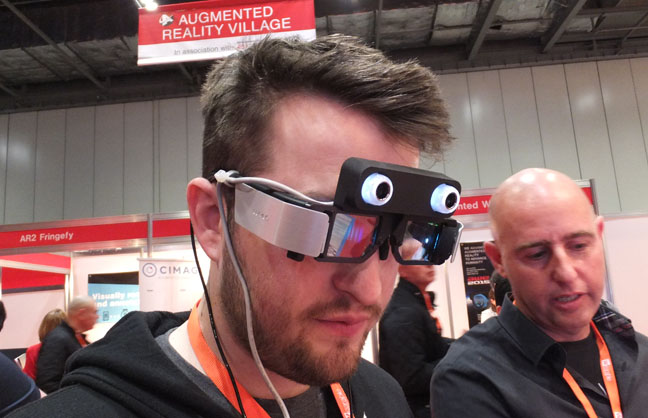
"Of course you don't look silly mate..." A punter tests the boundaries of reality
When it launches in June the modified glasses will be $1,000. The Infinity AR platform license fee is $4,000 per seat, per developer. Form an orderly queue please, ladies and gents. ®
